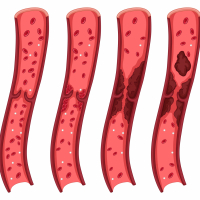
Research question
What are the effects of antifibrinolytic treatment in people with aneurysmal subarachnoid haemorrhage?
Background
A subarachnoid haemorrhage is bleeding into the small space between the brain and the skull that contains blood vessels that supply the brain (the subarachnoid space). The cause of this type of bleeding is most often a rupture of a weak spot (aneurysm) in one of the brain vessels. A subarachnoid haemorrhage is a relatively uncommon type of stroke, but often occurs at a young age (half the people are younger than 50 years), and therefore, has a significant socioeconomic impact. The outcome following a subarachnoid haemorrhage is often poor; one-third of people die after the haemorrhage, and of those who survive, one-fifth will require help for everyday activities. An important cause of poor recovery after a subarachnoid haemorrhage is repeated (recurrent) bleeding from the aneurysm (rebleeding). This is thought to be caused from natural blood clot dissolving (fibrinolytic) activity. Drugs that reduce the speed of the blood clot dissolving, called antifibrinolytic drugs, were introduced as a treatment to reduce the risk of recurrent bleeding and improve recovery after a subarachnoid haemorrhage.
Study characteristics
The evidence is current to May 2022. This review included 11 trials, with a total of 2717 participants, which investigated the effect of antifibrinolytic drugs in people with a subarachnoid haemorrhage caused by a ruptured aneurysm.
Key results
Antifibrinolytic treatment reduces the risk of rebleeding, but does not improve overall survival, or the chance of being independent in everyday activities. We conclude that there is no evidence to support routinely giving antifibrinolytic treatment to people with a subarachnoid haemorrhage caused by a ruptured aneurysm.
Quality of evidence
We assessed the evidence for the outcomes as moderate- to high-quality, which means we are very, or moderately confident in the results.

